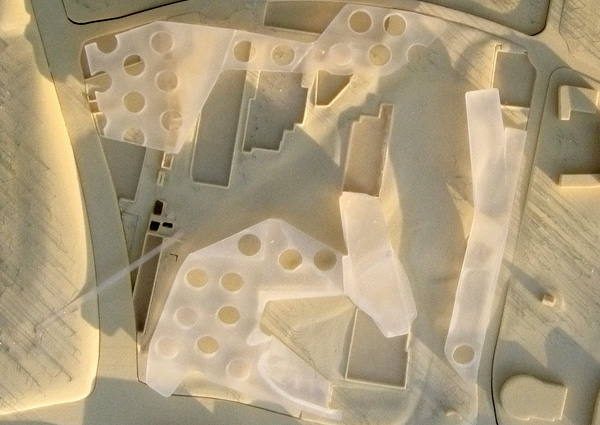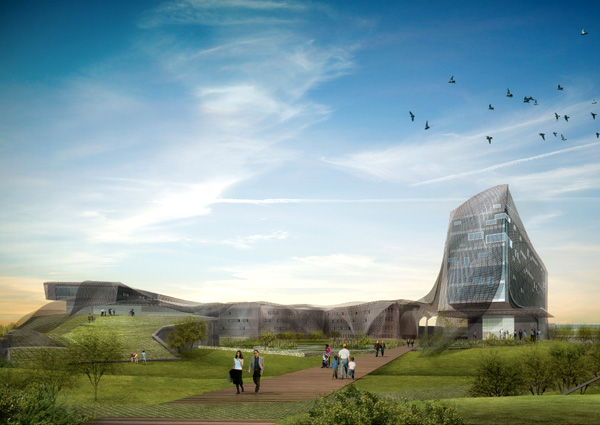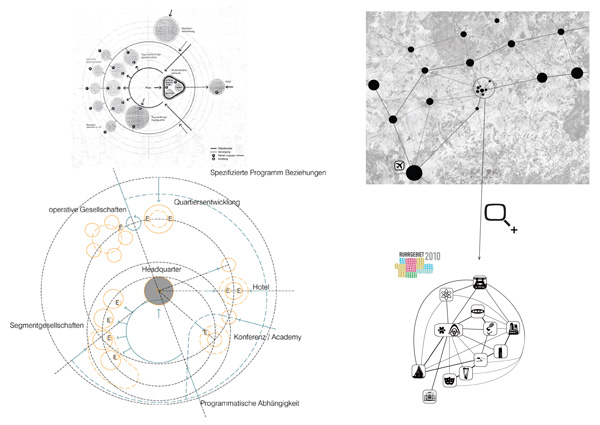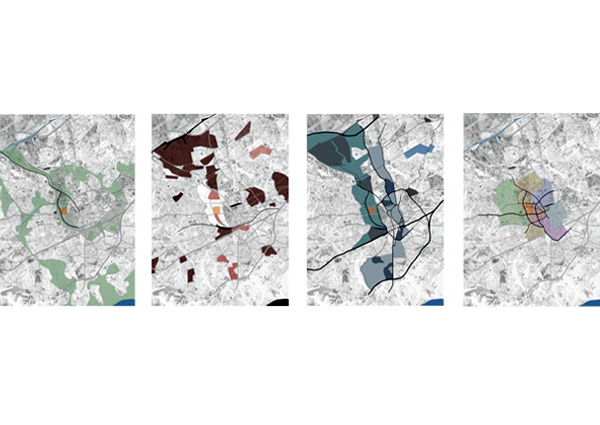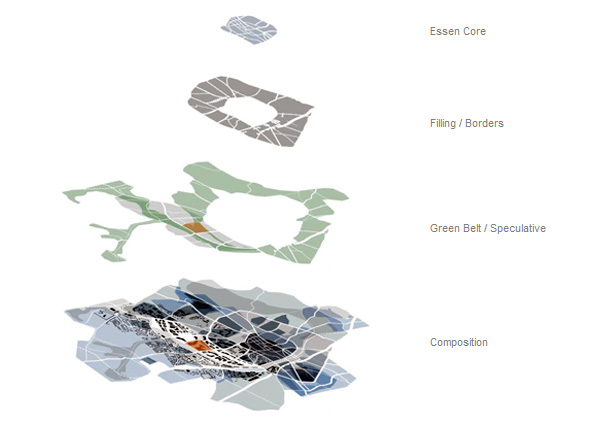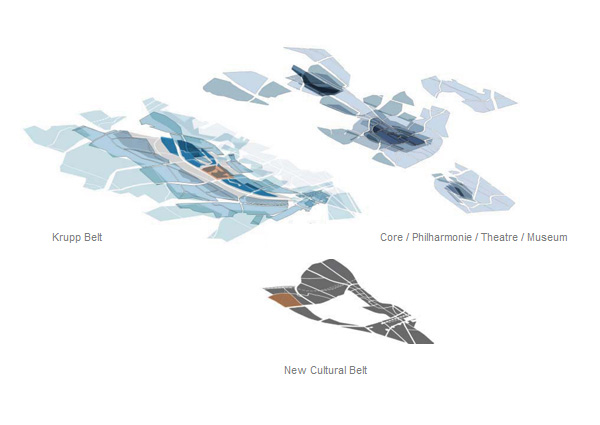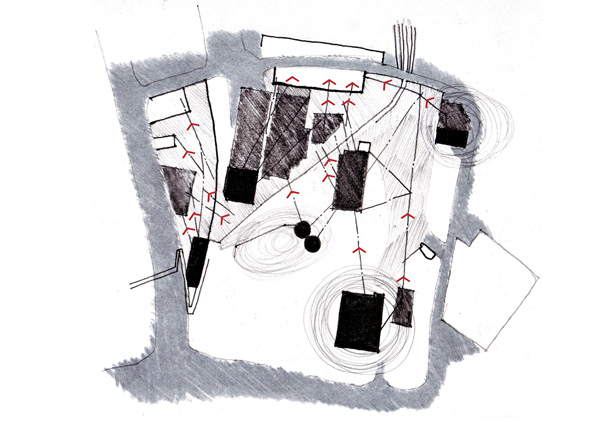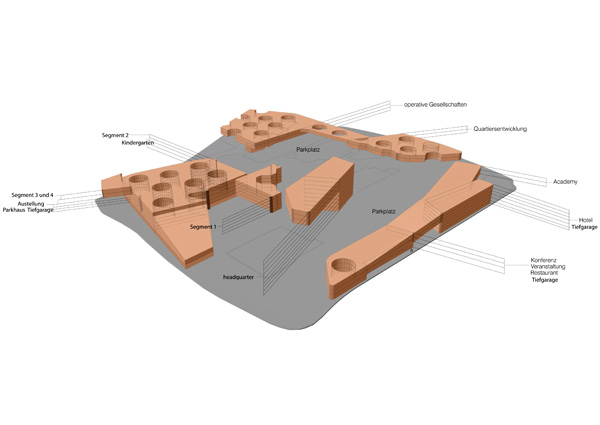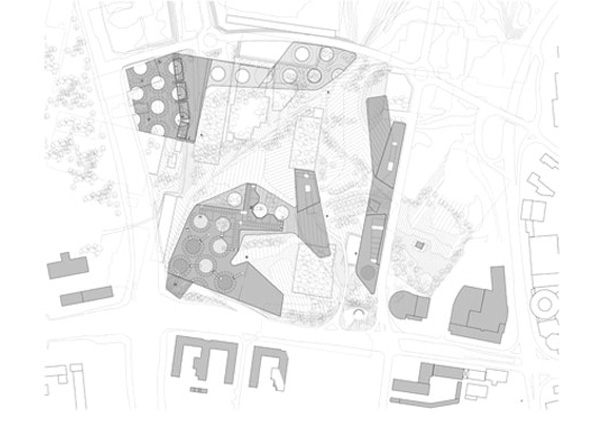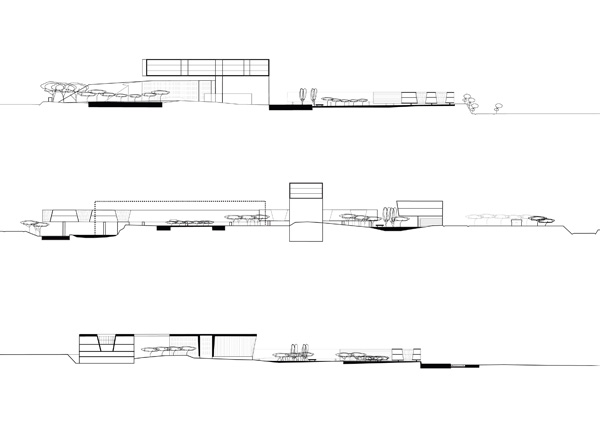ThyssenKrupp Group Quartier
- Completed:
- 2006
- Team:
- Jonathan Dreyfous
Victoria A. Rospond
Allmann Sattler Wappner
Anke Roggenbuck
Gloria Kim
Cem Dutoit
- Location:
- Essen, Germany
Suspended between the traces in the ground, signs of imminent activity and charged with the lightness of activities to come.
Continuity: Living recognition of the palimpsest of past occupations. The cognition and verification of weight (the past) does not necessarily present us with laden images of rolling mills and molten steel. Instead, we present constellations, like bits in a flow of information traveling along circuits. Steel machines still exist, but they obey the order of weightless units of information that erode opacity and clumsy heaviness. The ThyssenKrupp Campus speaks to the future from an evolving present and presence.
2010 European Capital of Culture: Essen, like a number of European cities in the past, can use the period leading up to their City of Culture year to transform not only their cultural base, but the way they are viewed internationally. The city itself has always been a crossroads of commercial and cultural forces. The ThyssenKrupp Campus can significantly impact the city’s ability to offer venues of exchange and activity.
Strategy: Essen is a nodal point of culture and commerce in a broader field of urban constellations within the Ruhrgebeit. The region is a series of belts mitigated by points of increased density strung along the Rhine River. The city itself is a fabric of concentric bands zoned in distinct precincts or "episodes" emanating from the old town. In juxtaposition to this order, the Krupp Belt, as with other swaths of programmatic linkage, simultaneously defines and erodes distinct boundaries. The site is an opportunity to bridge the residential districts outlying the city and the infill zones of commercial and cultural activity.
